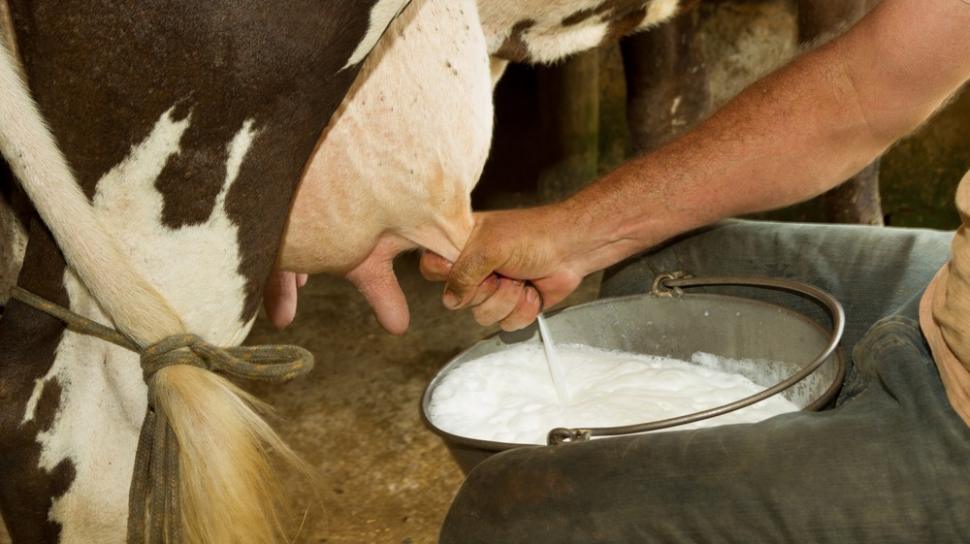Cases of methicillin resistance Staphylococci (MRS) have been discovered since 1962 where the first case of methicillin resistance Staphylococcus aureus (MRSA) was detected in humans with exponential development. Various studies have reported detecting MRSA strains in animals or food products of animal origin, one of which is cow’s milk with different prevalence variations. Basically, methicillin resistant (MR) in S. aureus occurs due to changes in penicillin-binding protein (PBP2a) thereby reducing the affinity of the β lactam antibiotic induced by the mecA gene in the staphylococcal cassette chromosome (SCCmec).
Confirmation of methicillin resistance (MR) is a significant factor in the potential for S. aureus virulence, such as the correlation of MRSA with the presence of exotoxins producing genes such as enterotoxin. Staphylococcus aureus itself is a commensal bacterium commonly found in ruminant skin and mucosa, which has a connection with sub-clinical or clinical mastitis that can be transmitted to humans through contamination of milk, unprocessed milk and other dairy products. Ingestion of Staphylococcal enterotoxins (SE) produced by several strains of Staphylococcus through the consumption of raw milk and milk products can lead to the occurrence of milk borne disease (MBD), where such events have been reported in many studies. SE has a good level of stability against heat and freezing / drying treatment, but also has resistance to proteolytic enzymes and low pH so that they can fully function in the digestive tract after consumption even at very low doses, which are 20 ng -1 μg / ml. Staphylococcal enterotoxin B (SEB) is a dangerous type because it is able to induce a super antigenic effect.
This study aims to detect the presence and evaluate the presence of MRSA strains carrying SEB gene that contaminate cow’s milk in East Java by combining 2 methods to detect MRSA, Cefoxitine disc diffusion and Oxacillin disc diffusion with Oxacillin Resistance Screen Agar (ORSA), then the PCR method for detecting the presence of SEB gene in MRSA isolates. This research information is very important to support strategic and technical decision making by related institutions for mitigation and prevention of impacts on aspects of public health.
Staphylococcus aureus (S.aureus) is a bacterium often found on the surface of the respiratory mucosa and in the urogenital tract of humans and animals. Staphylococcus aureus is a commensal bacterium that causes opportunistic infection in humans and animals. Staphylococcus aureus is a pathogenic agent that can cause various infectious diseases from cutaneous to systemic infections in the immunocompetent host resulting in death. S. aureus can be transmitted through milk and cause milk borne diseases (MBD). In this study S. aureus contamination was identified in 76 isolates (50.7%) of 150 samples of cow’s milk, this percentage is quite high.
MRSA infections spread throughout the world and continue to increase over the past 10 years. The prevalence of MRSA in the Asian region such as Japan and Singapore reaches more than 50% while in the Americas, Australia, some European countries range from 25-50%]. Prevalence in the Southeast Asian region, including Indonesia, is not widely known because research on MRSA is still limited. The number of MRSA detected in this study was 20 isolates from 24 isolates tested or 13% of the total sample of cow’s milk. These results are similar to several other studies reported which isolate the presence of 10.3% MRSA isolates. The source of MRSA transmission is due to contact with humans or transport animals, where cows infected with MRSA act as a reservoir and then transmit to other animals or humans. MRSA colonization of cows can be a risk factor for people who have close contact with MRSA infected cows such as veterinarians, farmers, milkers and people who work in slaughterhouses. The detection of MRSA in milk should be a concern and it requires strict farm management practices, as well as proper sanitation procedures such as in storage, handling and transportation.
In this study it can be concluded that the presence of cow’s milk contamination by MRSA is possible due to various factors, one of which is low milking hygiene. Moreover, the detection of SEB genes in MRSA isolates is very dangerous for public health aspects, which will increase the potential spread of Staphylococcal food poisoning that is difficult to treat.
Corresponding author: Dr. Mustofa Helmi Effendi, drh., DTAPH
Details of the research can be viewed at: http://www.sysrevpharm.org//fulltext/196-1598013862.pdf?1598750309
Ramandinianto, S.C., Khairullah, A.R., Effendi, M.H., Tyasningsih, W. and Rahmahani, J. Detection of Enterotoxin type B gene on Methicillin Resistant Staphylococcus aureus (MRSA) isolated from raw milk in East Java, Indonesia. Sys Rev Pharm 2020;11(7):290-298.





